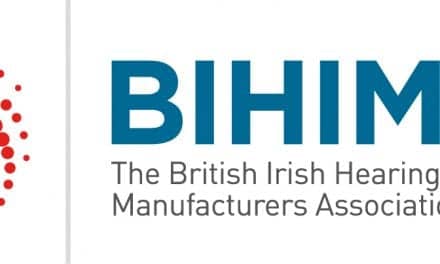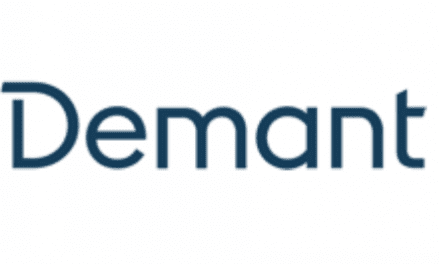![[Click on image to enlarge.] Quarterly US net unit hearing aid sales for the private/commercial (blue) and VA (red) markets, with year-on-year percentages for each and overall sales increases in bold at the top. Source: HIA.](https://hearingreview.com/wp-content/uploads/2018/11/QtlySales_HIA_Q3_2018-300x225.jpg)
[Click on image to enlarge.] Quarterly US net unit hearing aid sales for the private/commercial (blue) and VA (red) markets, with year-on-year percentages for each and overall sales increases in bold at the top. Source: HIA.
In total, combined sales have increased by 5.9% through the first three quarters of 2018 compared to the same period in 2017 (6.9% private sector, 1.8% VA). Last year, the US hearing aid market grew by 3.4% (4.0% private sector, 0.9% VA).
Most market analysts consider “average growth” for the US hearing aid market as 2-4%. Thus, the overall picture of the US hearing industry in 2018 has been one of above-average sales powered by the commercial sector, which has seen quarter-on-quarter growth of 7.2%, 7.3%, and 6.2% in the first three quarters of the year, respectively. In contrast, the VA saw its dispensing activity slump slightly by -0.48% and -0.38% in the first two quarters, only to rally with a 6.4% gain in Q3.
4 Million Hearing Aids? The recent HIA sales statistics suggest total hearing aid unit sales could exceed 4 million units for the first time in 2018 (Figure 2). HR’s projection places the final number at 3.98 million units, or tantalizingly close—just 20,000 units shy of the 4-million mark. Hearing aid unit sales crossed the 3-million unit mark only 4 years ago in 2014. So, the overall market for amplification continues to gain steam: the 1-million-unit threshold was achieved in 1983; it then took 20 years for the hearing aid sales to reach 2 million units in 2004, and then another 10 years to reach 3 million units in 2014.
However, despite these encouraging statistics, it is obvious that not all the sales are being realized by traditional dispensing practices. As noted in previous HR market reports, HIA statistics have become more opaque as Big Box retailers and other distribution channels have increased their market power, and these channels are also reflected in the HIA’s reporting of “private sector/commercial” statistics. For example, Costco is now estimated by HR to constitute over 12% of the market. Additionally, pharmacy chains and alternate distribution channels continue to gain ground. For example, IntriCon, the Twin Cities-based manufacturer of branded economy hearing aids and personal sound amplification products (or PSAPs, what may soon become “OTC hearing aids”), has become a darling of the stock market as its revenues have increased by 25.4% so far in 2018 after posting an increase of 29.9% in 2017.
BTEs make up three-quarters of US market. Through September 2018, receiver-in-the-canal (RIC) hearing aids made up 72.2% of the US hearing aid market, while traditional behind-the-ear (BTE) aids made up 12.6% (Figure 3). Since RICs are considered a sub-type of BTEs, this means more than 5 out of 6 (84.8%) hearing aids sold in the United States are of the BTE style.
In-the-ear (ITE) hearing aids, as a group, made up the rest (15.2%) of the US market. Specifically, in-the-canal (ITC) aids comprised 5.0% of the market, full-shell ITEs 4.2%, completely-in-the-canal (CIC) 4%, half-shell ITEs 1.5%, and “other” ITEs 0.6%.
Wireless hearing aids now make up 91.6% of all hearing aids sold in the United States, according to the HIA statistics. Almost all (99%) of the RICs dispensed are wireless, while 86% of ITEs and ITCs, and about 65% of traditional BTEs and CICs, are classified as wireless hearing aids.










Sales will grow even faster once the retailers start educating along with selling. How many know it’s a fact that you are 5X more likely to develop dementia from hearing loss than you are cancer from smoking!! Maybe we should put warning labels on TV’s and Stereo’s